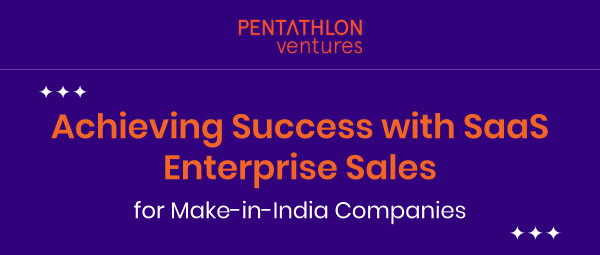|
Edition 6 l 23rd September 2022 |
|
The US has always been the promised land for tech entrepreneurs
from India since it has the biggest share of a booming SaaS
market. Success in the highly competitive US market is a must for
any startup that hopes to achieve great heights, accelerate
growth, and establish itself as a segment leader. Define your sandbox.
Defining the space (sandbox) that you are entering is important
for two reasons. One, it gives you greater clarity about the value
that you are bringing to the marketplace. If you are playing in an
existing sandbox, be very clear about why you are better than
anyone else already present there. Of course it is best if you are
able to define your very own category/sandbox where you stand
alone.
Get a sales champion aboard.Whether it is a new category or a better product in an existing category, it is hard to get the messaging right in the first go. A good sales leader will be both an earnest pitch person and an excellent listener. The customer feedback can be used to fine tune the messaging of your product. Do not be afraid to try different options to see what resonates with the customer.
For instance, employee productivity software, with its feature of time tracking, might have a good response in India. In the US, the phrase had ‘big brother’ connotations and drew on attendant fears of surveillance and monitoring.
A sales leader can help you navigate these intricacies early on.
Here s some reasons why it is important.
For instance, look for someone with a sports background or
experience in the armed forces. Even as a general advice for
hiring, this can seem counterintuitive, but here’s why it works.
Chase the whale.
Entering the US market as an outsider, you aren’t chasing 100
people. The struggle is still to get 10 paying customers. Getting
a big customer is important for the logo slide of testimonials.
Brand recall is also important here.
Pricing.
Getting the pricing right is a bit tricky. Relatively speaking, US
customers aren’t as price sensitive as customers in India. But the
pricing is very closely based on value proposition, with products
or services that solve pain points or are in mission critical
roles (like those providing data security) getting a higher
premium.
Pricing is an art. In the US,
getting the value
|
